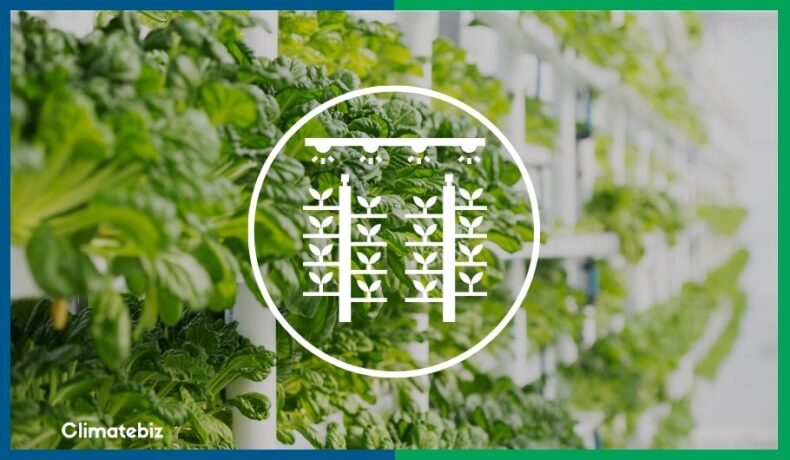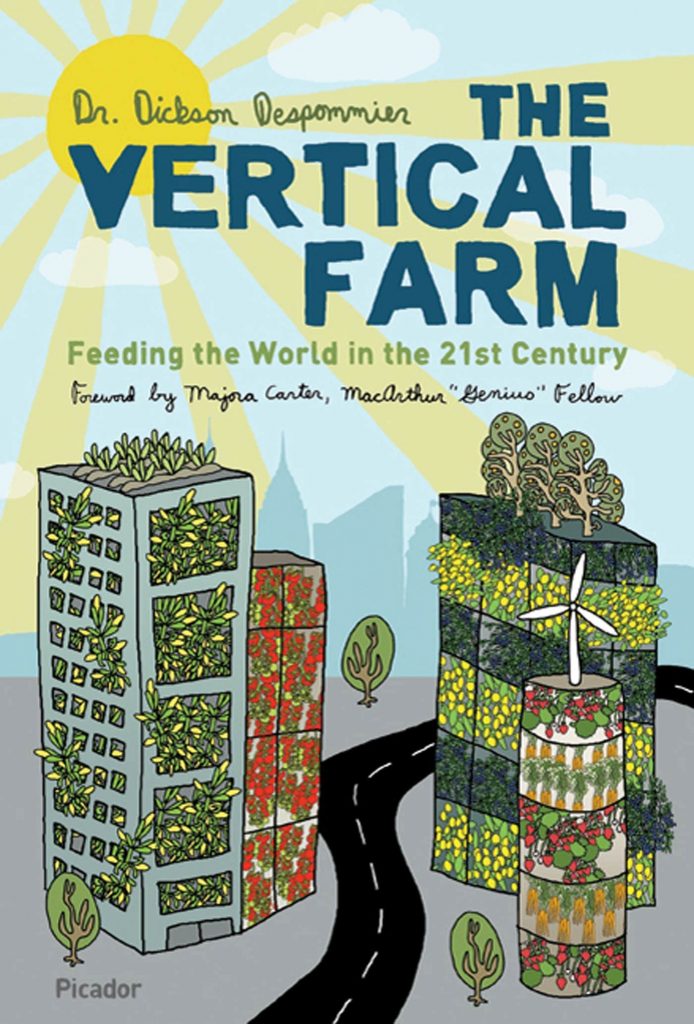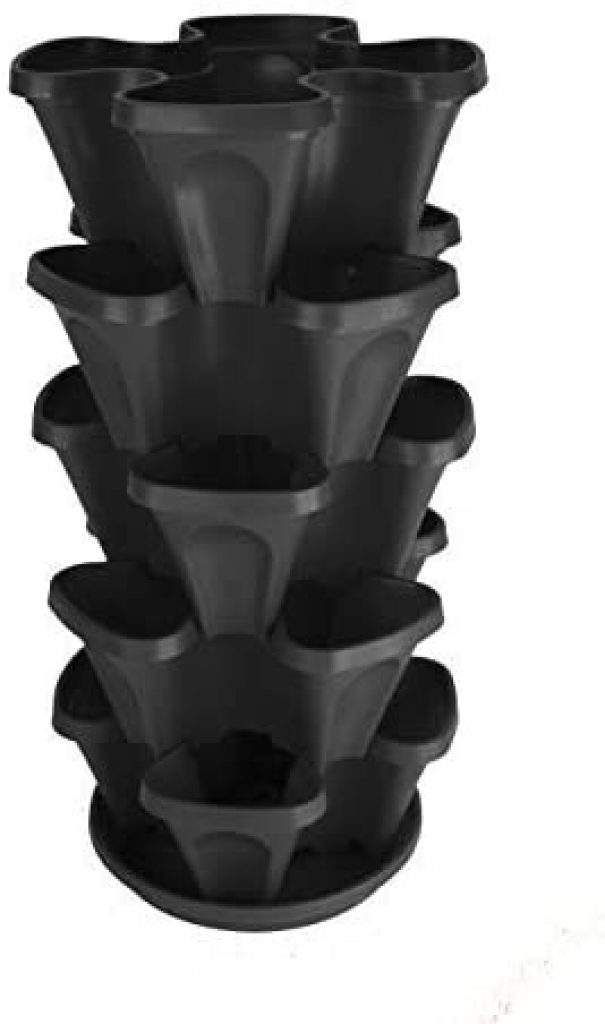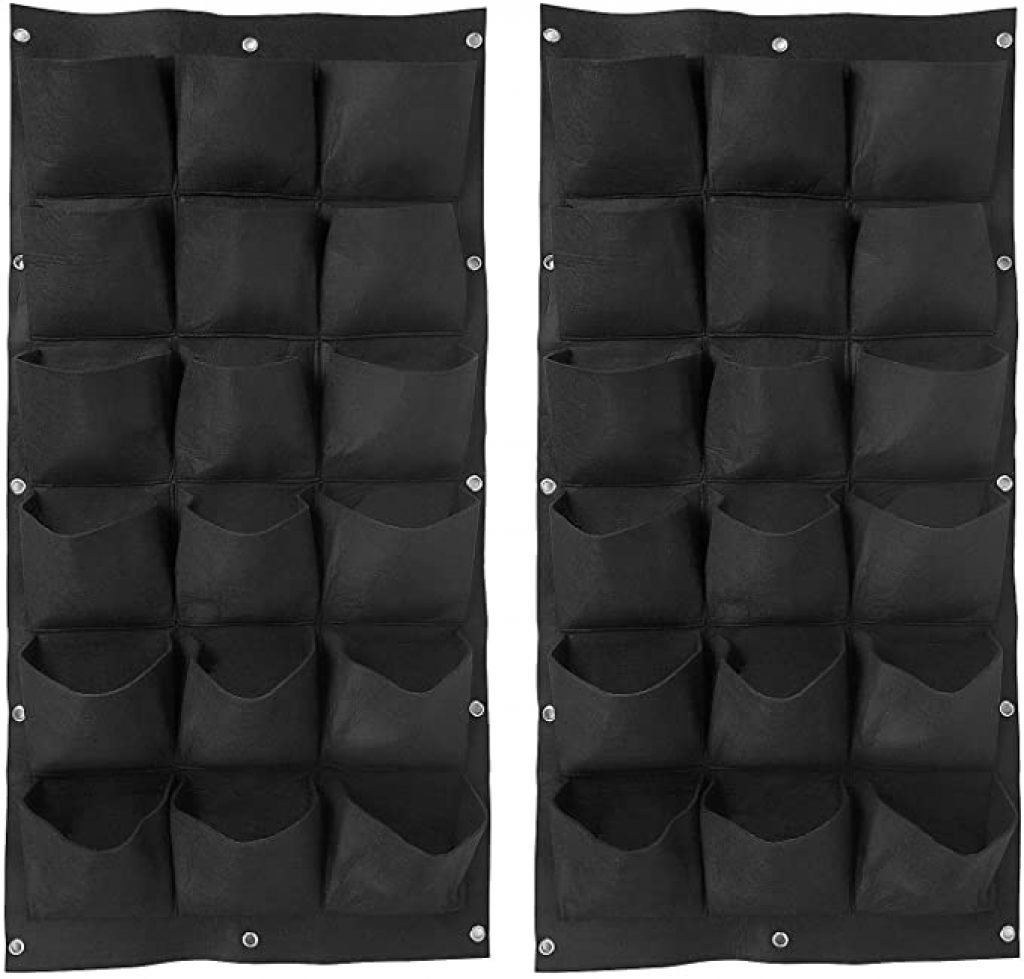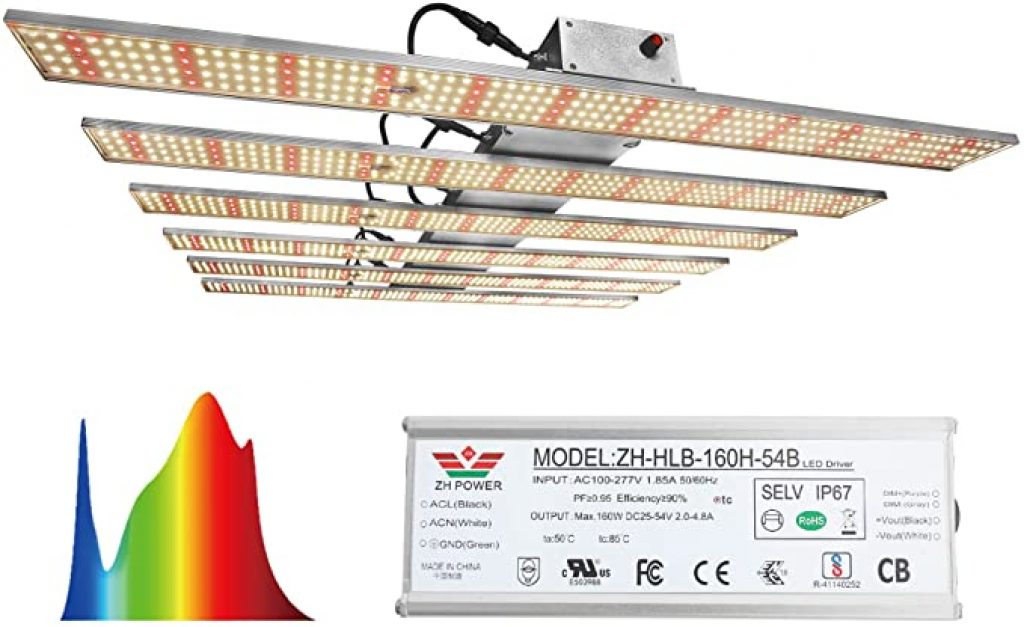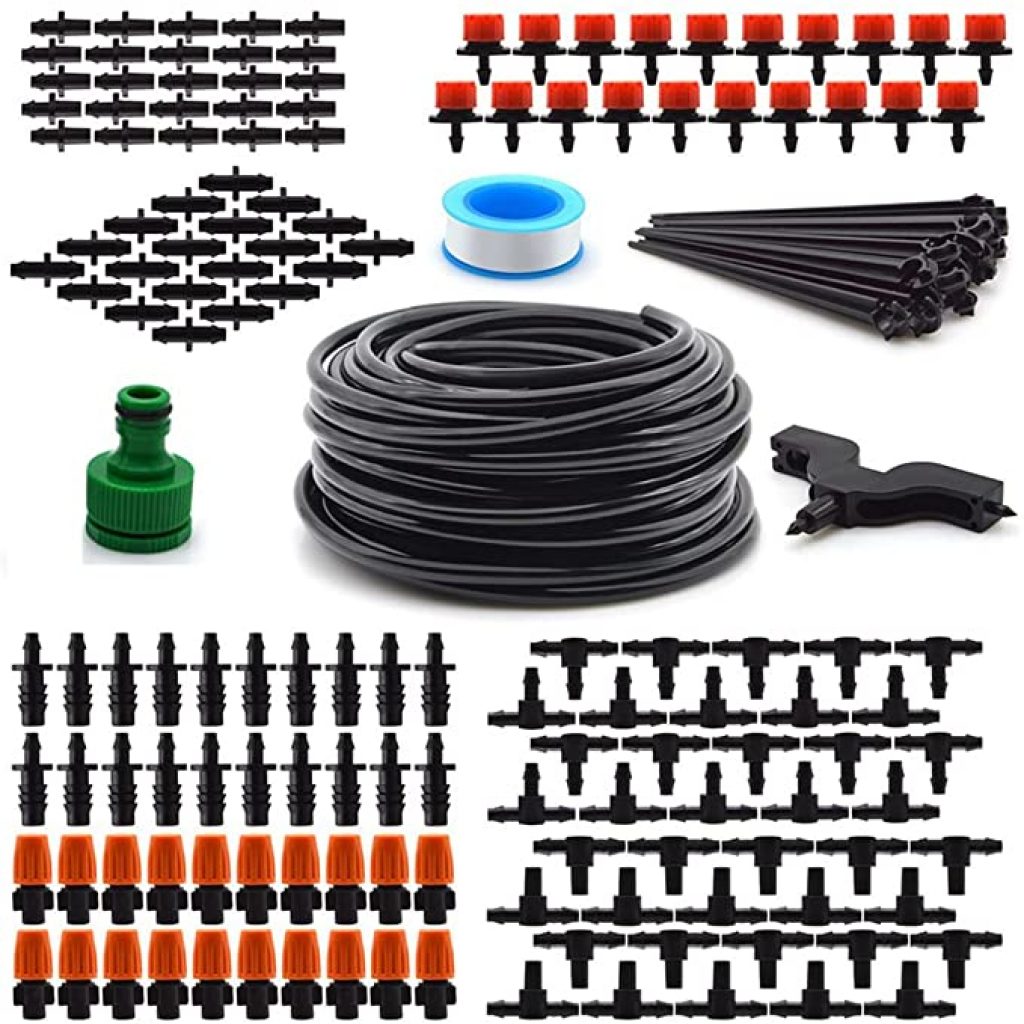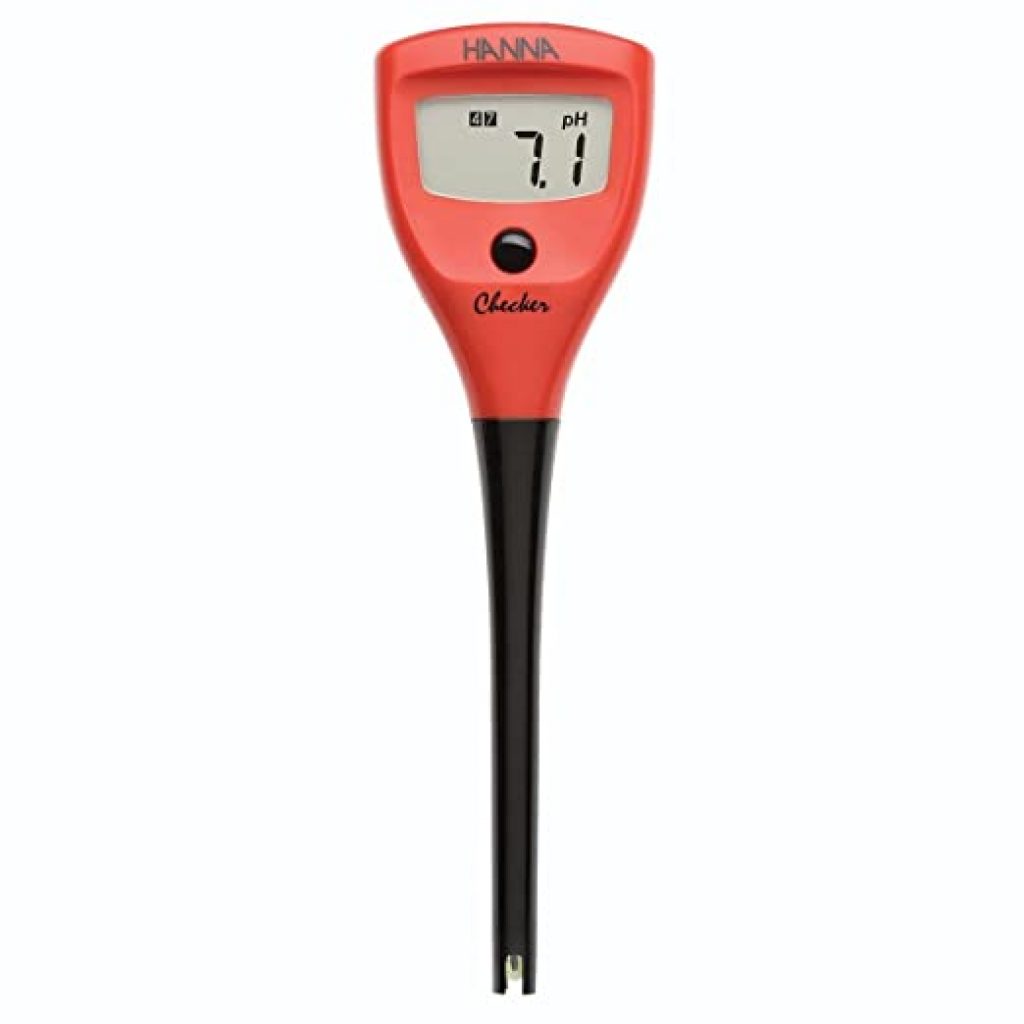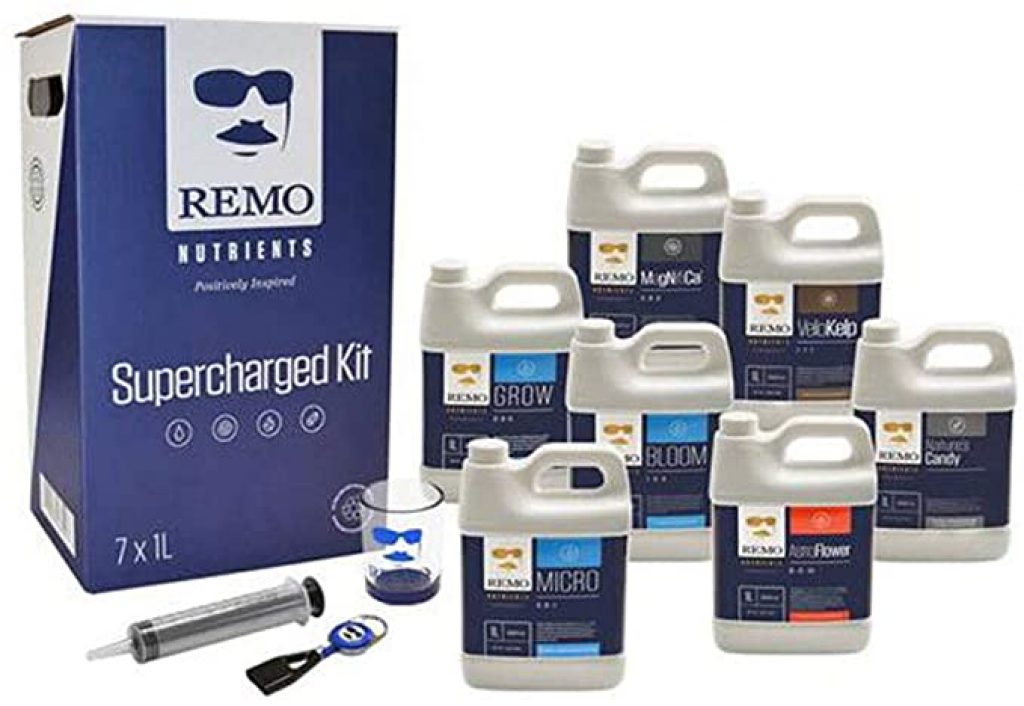Indoor vertical farming may be the answer to the questions surrounding our future food security.
Cities are growing exponentially, and the planet simply can’t handle the pressure already placed on it.
You’ve all seen the frightening videos circling social media at some point. And truth be told, most of you have felt the economic impacts in your pockets with food prices skyrocketing all around!
From massive agricultural centers to the comfort of your balcony, this technological development holds an incredible amount of potential for a brighter, greener future.
This article will take you on a journey up into the top reaches of vertical farming structures and teach you the fundamentals of what there is to know!
Table of Contents
What Is Indoor Vertical Farming?
Could you see yourself having a walk-in grocer in your own home or workplace?
Well, that pretty much sums up what vertical farming is!
This is a technology where fruit and vegetables are grown indoors and in an upwards direction, in a carefully controlled environment.
A genuinely savvy way of food production for fresh produce!
Vertical farming has been a background player for many years before.
Thankfully, a university professor wrote a book focusing on how vertical farming plays an essential role in overcoming one of the biggest environmental crises of modern times.
Now you probably find yourself wondering exactly how vertical farming works.
Is it possible to do it in your very own home too?
How Does Indoor Vertical Farming Work?
Indoor vertical farms are either substrate-based systems (grown inside contained soils) or directly hydroponic-based systems (produced inside foam or water).
These systems are structured so that the plants grow upwards in your home or a more extensive commercial farming setup.
Why stop there? Why not aim even higher?
Taking things one step further, you can even use the combination of a fish tank and vertical garden to set up a functioning vertical farming system.
Equipment Needed for Indoor Vertical Farming
Every system is a collection of bits and pieces.
Here is a closer look at what you might need for yours!
Facility
If you have an existing garage or indoor space that you can utilize, then you won’t need to factor in.
However, if you wish to create a large farming facility, you must include the monthly rental costs into your budget.
Structural Equipment
Depending on what type of vertical farming you’re considering, you’ll need structural equipment, including frames, racks, and pots.
Thankfully, these are readily available online!
You can consider a stackable planting set for a small farming system on your balcony.
If you prefer a wall hanging structure for your balcony, hanging potting bags would be a perfect solution!
For a more extensive farming set, you will need to look at buying a shelving structure.
These structures usually consist of a steel rack and additional shelves (optional, depending on your choice of plants).
Lighting Systems
For vertical farming that needs additional lighting to subsidize missing sunlight, you will need to find an adequate lighting system.
These lighting systems range from a single globe to a full panel of lights. The bright side here is that you have various options to choose from.
Even better, there are many energy-efficient grow lights out there too!
Irrigation And Watering Systems
Water is a vital resource for the successful growth of your vertical farming system!
There are various types of watering systems for you to choose from.
These include drip or spray irrigation systems, as well as pumps.
There is always the option of purchasing a fully inclusive vertical farming system, such as a grow tower.
pH Measuring Devices
Measuring the pH of your vertical farming system is imperative to maintaining a healthy crop!
How so?
When the acidity or alkalinity of your water is off, there can be cascading effects on plant health and survival. Thus, it is essential to monitor and adjust the pH in your system consistently.
Buying a soil or water pH tester is an absolute must!
The Plants And Planting Materials
Last but not least, your purchase of plants and plant materials!
For you to farm, you will need the actual crop-producing factors. This includes seeds or fully grown plants and the material in which they grow.
If you’re looking to grow in soils, you will need to find soil suitable for your crop. Some crops prefer loamy soil and others do not.
If you prefer to grow hydroponically, buying a pH balance kit and nutrients is vitally important.
Other methods, such as aquaponics, will require that you buy the best-suited fish for your plant choice.
When choosing your plants, it is imperative to go for those best suited to the environment which you have to offer.
The last thing anybody wants is a crop that never grows, so choose wisely here!
Indoor Vertical Farming Costs
Indoor vertical farming costs will include your facility, equipment, water, and energy.
Let’s dig a little deeper.
| Aspect/Product/Service | General Cost |
|---|---|
| Facility monthly renting | Roughly $150 per month for ample city garage space |
| Shelving/Stacking structures | Around $50 per 5-level stacking planter Roughly $3000 for wholesale size two-level shelves |
| Lighting systems | From $25 to $500 (depending on the size and strength) |
| Irrigation and watering system | Roughly $20 to $400 if pumps are included |
| pH measuring devices | Around $20 to $400 depending on the type |
| Plants | Approximately $3 per seed packet |
| Planting material | Roughly $20 per gallon |
| Nutrients | Starting around $25 per gallon |
| Water use | About 5 liters of water a day |
| Energy use | Changes between types of plants Example: strawberries use around $115 kWh monthly per square meter |
Facility Monthly Renting
If you have a balcony or your garage, you need not worry about finding a space.
However, if you’re looking to go big and start an agricultural setup, renting a garage in the city may be a good option.
In this case, you’re looking at around $150 a month, depending on size and location.
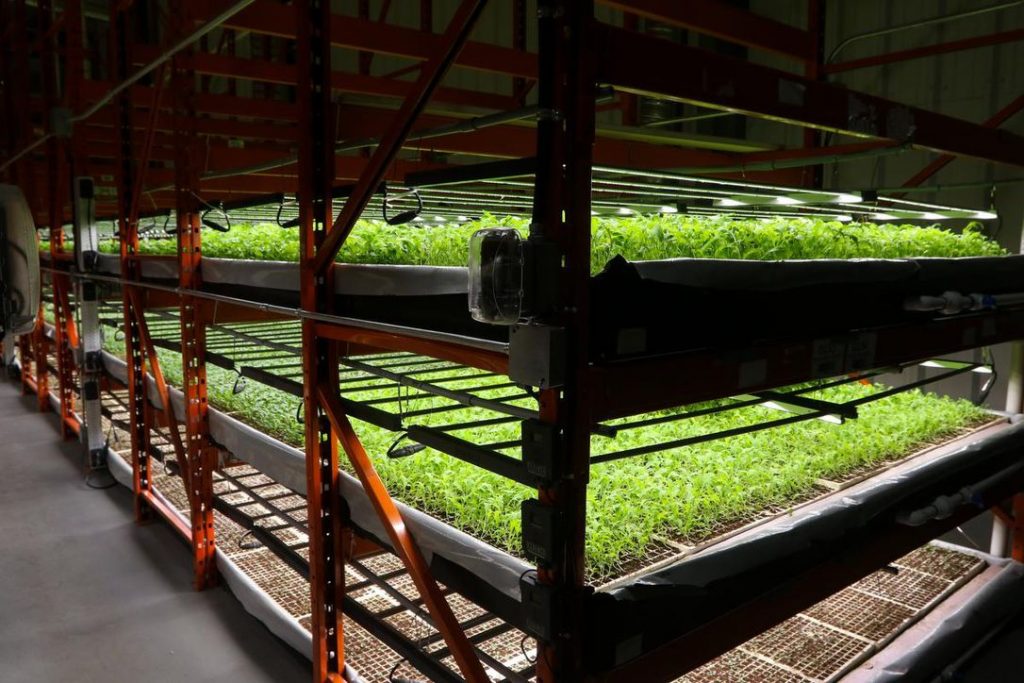
Source: Toronto Star
Shelving/Stacking Structures
Looking to grow strawberries? Then a multi-stacker is for you. These 5-tier structures come in at around $50.
More extensive shelving for more significant operations will cost you roughly $3000 for a two-tier wholesale structure.
Lighting Systems
The future of your vertical farm will be looking bright with grow lights at your side!
Every crop has its lighting requirements, so it is pretty challenging to estimate the cost.
General figures are anything between $25 to $500.
Irrigation And Water System
Irrigation systems start at roughly $20 and can go to the $400 range when pumps are added.
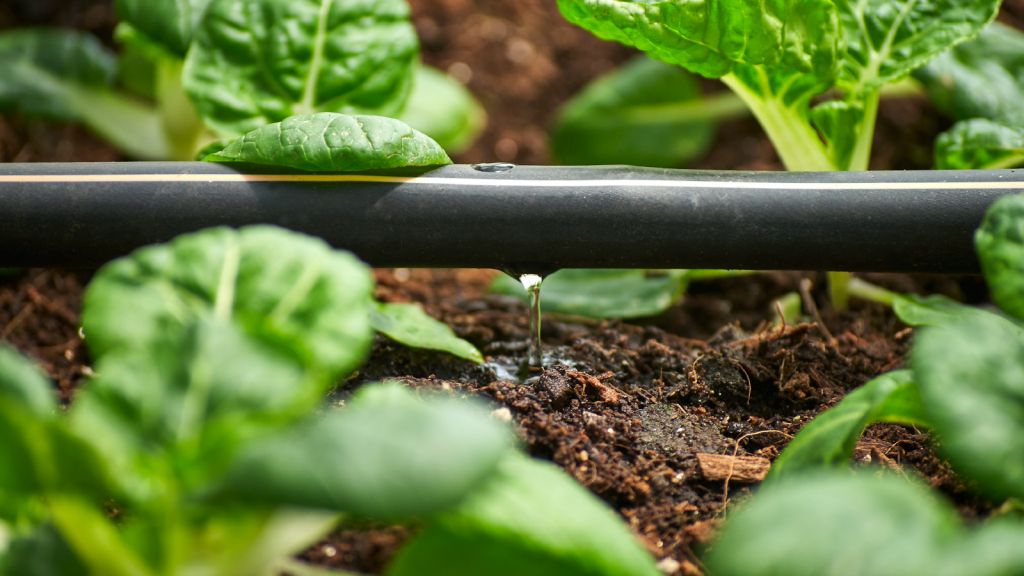
Source: Verticalfarmingdaily
PH Measuring Devices
These come in at around $20 to $400.
Plants
Prices vary for seeds or fully developed plants. But you can buy seed packets for around $3 (in the case of strawberries).
Planting Material
If the system you have uses planting materials such as potting soil, you can expect to pay around $20 per gallon.
Nutrients
Nutrients such as calcium may become necessary for your system and cost roughly $25 per gallon.
Water Use
Each system will have different water requirements. Generally speaking, you are looking at around 5 liters per day. However, one can’t generate a ballpark figure, as this is a very specified technology.
A great way of reducing your water use would be through rainwater collection — this is a fantastic way of using what naturally occurs around you. What’s more, you can even build your very own rainwater harvesting system!
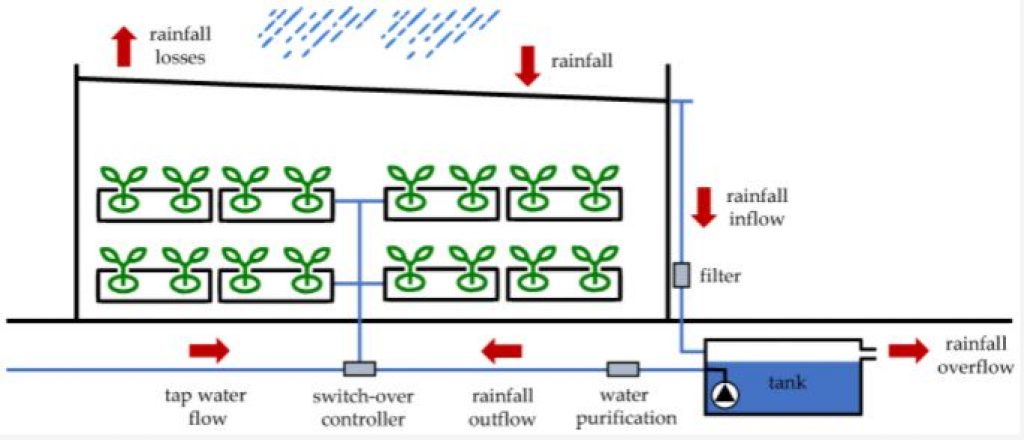
Source: Applied Sciences
Energy Use
Energy usage is necessary for your grow lights, temperature control, running your computer systems, and data management.
All lights and systems require a variety of electricity, so determining the exact costs is highly dependent on what you plan on doing and to what extent.
If you’re looking to go green, you can mitigate energy costs by using renewable energy such as solar power or geothermal heating and cooling.
Renewable energy is always an excellent alternative, as it reduces your carbon footprint and is easier on the pocket over the long term.
What Are The Benefits of Indoor Vertical Farming?
Indoor vertical farming carries many advantages that certainly make this technology worth considering!
These pros include:
- Not dependent on weather: great advantage of indoor vertical farming is that the outside weather does not influence your crop!
- Optimal use of space: growing up uses much less space than growing across acres and acres.
- Less fossil fuel emissions: using indoor irrigation reduces the need to operate farming equipment to distribute water and nutrients.
- Reduced need for chemicals and pesticides: the controlled environment where you grow your crops means that fewer unwanted critters can get a hold of your plants.
- Reduced cost of labor: a vertical farm is much more automated than conventional farming. Thus, less labor needs to be employed, and you are faced with less risk.
- Energy-efficient: renewable technology such as solar can be used to power grow lights. This reduces the need for excess energy!
5 Best Crops For Indoor Vertical Farming
There are a variety of choices that’ll make you find yourself surrounded by lush leaves and delicate fruit!
1. Vining Tomatoes
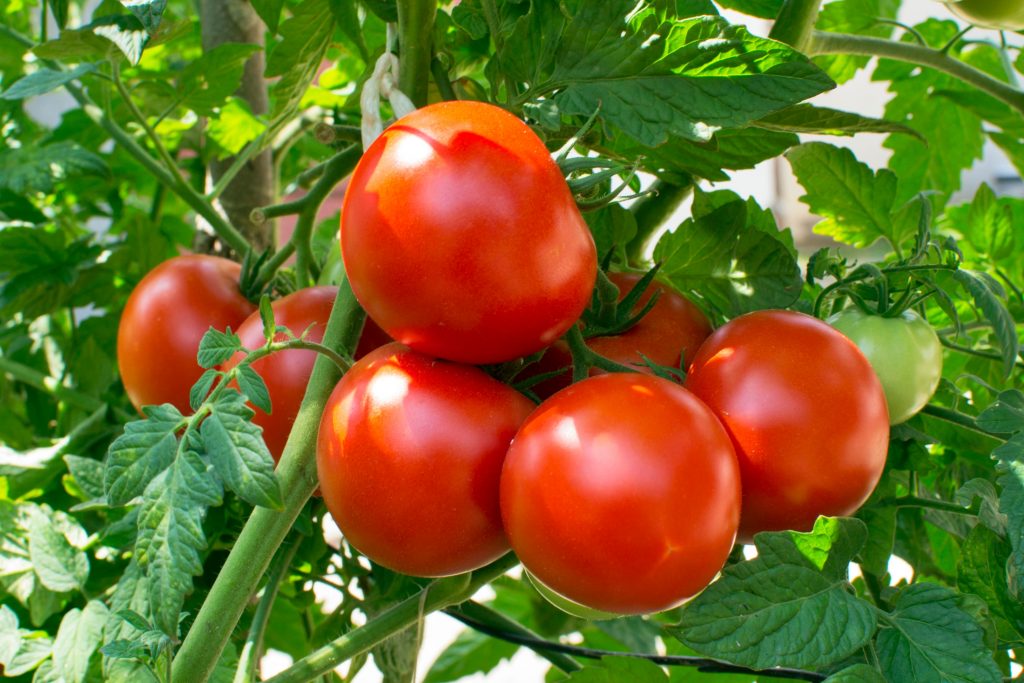
Source: Everybody grows
You can’t deny that vining tomatoes make delicious additions to that fresh family salad!
These round red beauties do particularly well when grown vertically and love to grow abundantly.
When choosing to plant vining tomatoes, keep trimming them to keep them at bay. Overcrowding will lead to uneven light distribution and less than optimal growth.
2. Spinach
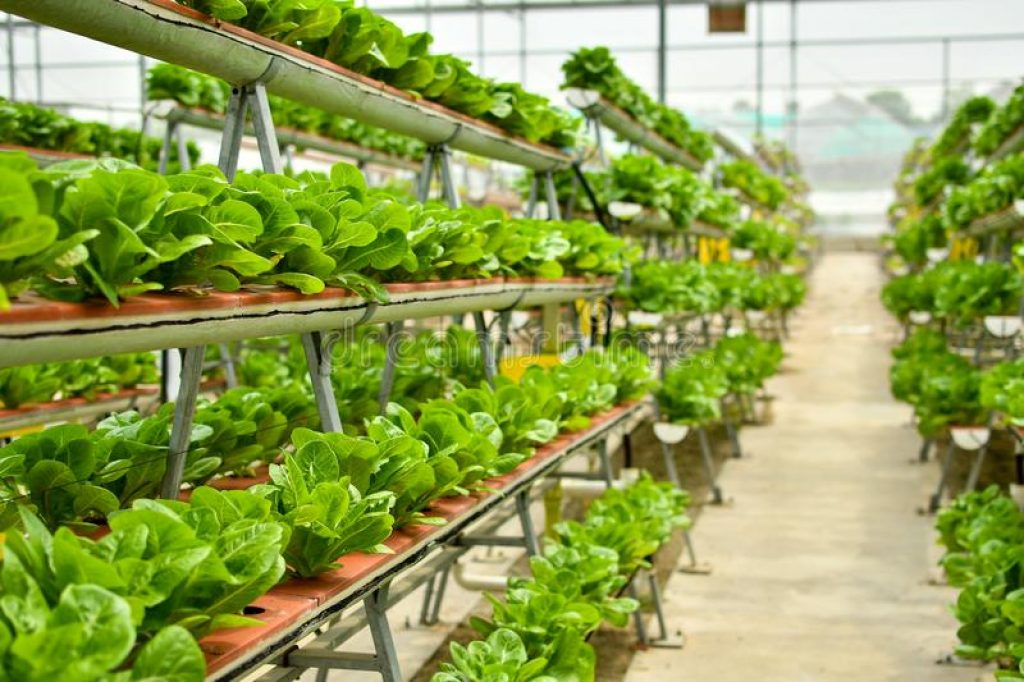
Source: Dreamstime
Spinach is packed with an assortment of nutrients!
Even better, spinach offers multiple harvests from a single batch per season. Keep a close eye on the leaves for uninvited six-legged guests, and you will be just fine.
3. Peppers

Source: GardeningTips
The ever-popular pepper is a winner for indoor farming.
If you keep them happy in a warm environment, you can expect the perfect pepper harvest.
Be mindful of overcrowding from top layer peppers; the last thing you want is the peppers on the bottom layers to be starved of growing light!
4. Strawberries
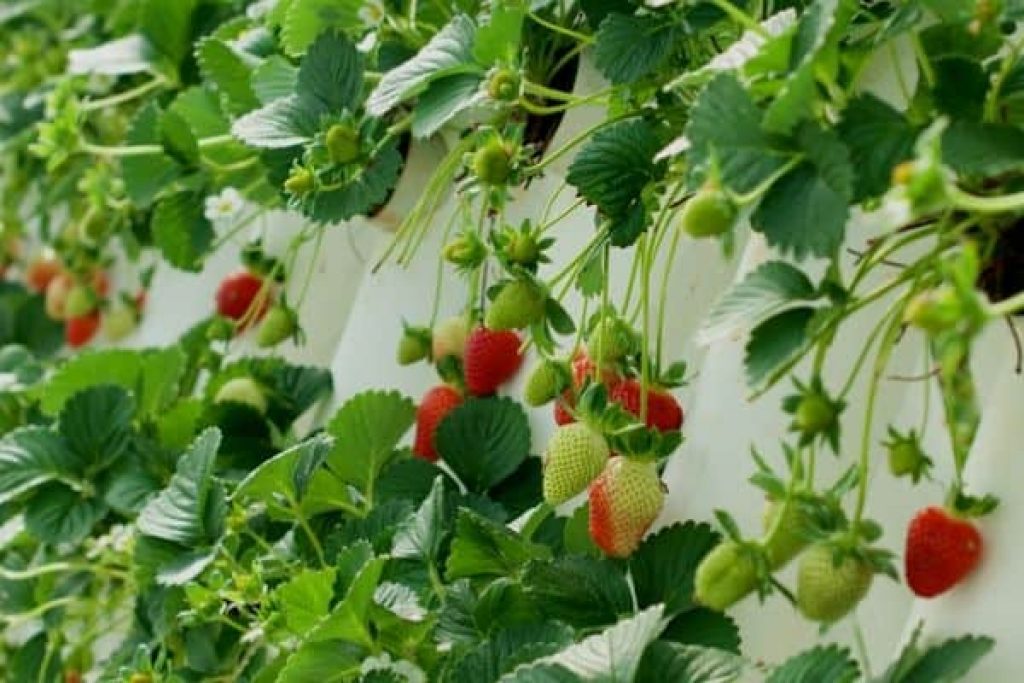
Source: Urban Garden Gal
Juicy and an absolute delight, strawberries can be successfully grown in vertical pocket farming gardens. What’s more, strawberries are pretty low maintenance.
Strawberries grown in this manner will also reduce the fight you might usually find yourself in with bacteria and birds coming in for the picking.
5. Kale
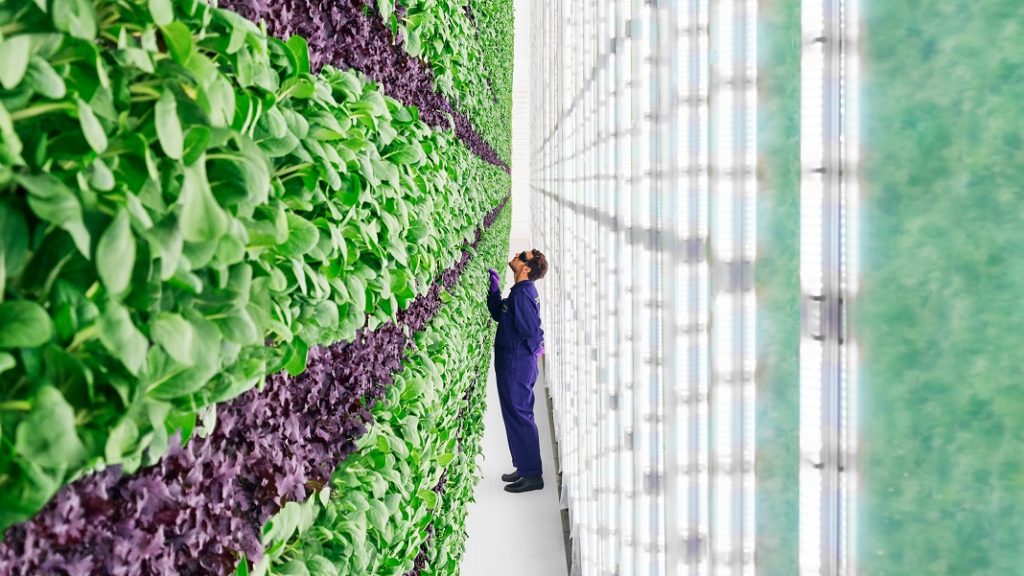
Source: NASA
When you think of kale, the first word that comes to mind is “superfood.” This is because kale is one of the most nutritious and healthiest foods.
The best news? It can be grown in an indoor vertical setting too.
Kale can be harvested numerous times per harvest season. So best believe, if you cut they will grow back again!
Final Thoughts
When you unravel the leaves of information, there is a message that becomes clear:
Indoor vertical farming can provide us with the food security we so desperately need in our homes or as a commercial practice!
This technology offers the advantage of choice and variety with the added benefit of implementing green technology. There truly is a combination suitable for your needs.
When you carefully consider what you want to plant, your budget, and how you can potentially save even more water and energy resources — you simply can’t go wrong!

